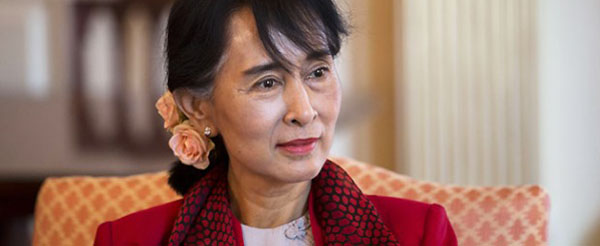by Peter G. de Krassel
I was in Shanghai April 12-14 for the Chinese Formula One Grand Prix. California Governor Jerry Brown was also in town opening the California-China Office of Trade and Investment and signed four deals worth more than $200 million. Secretary of State John Kerry was in Beijing trying to defuse the North Korean crisis. While enjoying the race, I couldn’t help flash back to my visits to Myanmar in the 90s when, like North Korea today, Myanmar was considered a danger to regional peace and stability.
Myanmar, runner-up to North Korea as Asia’s worst regime, and its democratizing military junta, is a good model for Kim’s generals to study and emulate.
Kim Jong Un could emerge as the real unifying hero of the Korean people by initiating re-unification talks, adopting economic reform policies on the Chinese model and opening nuclear disarmament talks.
It’s important to keep in mind a few key political and military facts.
Based on historical record, no modern authoritarian ruler has ever managed to pass power to his grandchildren. While succession from the first-generation dictator to his sons is fairly common, no succession from the second to the third generation has ever taken place in non-monarchical autocracies.
In all cases, the second-generation rulers, typically more corrupt and less competent than their fathers, were overthrown before they had a chance to hand power over to their sons. Kim Jong Il, although fitting the second- generation corruption mold to a tee, managed to hand power to his son who knows he is killing time before he is sterilized or terminated politically.
Kim the younger is ill-prepared for the job and lacks his father’s establishment power base, hard-headed attitude to governing and lack of concern for his starving citizenry. Nevertheless, he is lucky because Washington, Beijing, Seoul and Tokyo want to see a smooth transition to stable power in order to resolve the impasse of issues that could lead to a peaceful and prosperous reunification.
The geopolitical reality is that reunification will take place. The only remaining questions are when and how – and how to best go about it.
The military issues, disarmament, reduction of U.S. troop levels in South Korea, or the addition of Chinese troops in the North to work with the U.S. forces to ensure a smooth reunification and then both withdraw under mutually agreed terms and time-lines are questions that the relevant parties must come to terms with as soon as possible.
Surely, even the smart North Korean generals, like their counterparts in America, China and Myanmar, see the hand-wringing-and-writing on the wall. Their regime’s unsustainability – military, economic and political – can only be crystallized to them by China, with strong American support.
Surely, watching Myanmar push back against China by halting construction on the Chinese-led Myitsone dam project, Myanmar’s largest hydopower project, release of pro-democracy leader Aung San Suu Kyi, herself the daughter of a military general, and not just any general, but the founding revolutionary leader who lead the country’s independence war against Britain – its George Washington – and allowing her to run for office and win again, abolishing censorship, revamping labor laws, holding talks with ethnic rebels, securing a ceasefire with the Karen National Union, releasing political prisoners and embracing the U.S. as a geopolitical partner and accepting its democratic ideals, must make young Kim and Uncle Jong wonder why, or is it why not? What better way for the Kim dynasty and its military supporters to survive?

